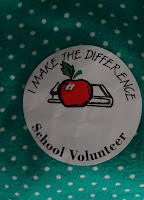What are you
most proud of in your 2-Hour Presentation and/or your senior project?
Why?
I am proud of my first and best answer. The reason why I choose this was because I felt like I did a good job of explain my answer and that I gave a lot of information and went in depth with it too. Also my activities. I really like them, I thought that they really help support all of my answers.
2)
Questions to Consider
What
assessment would you give yourself on your 2-Hour Presentation
(self-assessment)?
AE P
AP CR NC
I would like to say either a high P or AE-
What
assessment would you give yourself on your overall senior project
(self-assessment)?
P
3) What
worked for you in your senior project?
The research checks help me a lot. They help me to actually make time to research and to get quality research. If we didn't have the research checks every Friday I honestly think I would not have done well on my 2 hour.4) (What didn't work) If you had a time machine, what would have you done differently to improve your senior project if you could go back in time?
5) Finding
Value
How has the
senior project been helpful to you in your future endeavors? Be specific and use examples.Well in the future I for sure plan to work with deaf children and in the deaf community. I am torn between being a DHH (Deaf and Hard of Hearing) teacher or a school psychologist. The knowledge I already had about Deaf culture was just the tip of the iceberg. With this project I was able to have a deeper understanding of how deaf children have a hard time in school. I know why and how I am able to change that. My reasoning for wanting to be a DH teacher is because I saw in Christy Neria's classroom I saw how passionate she was about teaching these children and how she helps the build there BICS (Basic Interpersonal Communication Skills) and CALP (Cognitive Academic Language Proficiency) for them to be successful. Also with being a school psychologist I can able to help these children throughout their school career. According to Gallaudet University 20-50% of deaf people have an additional disabilities. I bet having one is hard already, imagine having two or more, I am sure it might be hard for them to want to go to school. What I got from my project was that I know, through research, and experience from mentorship, what some of these children go through. Already having these experience at such a young age I feel that later in my life I can be beneficial to the student.





 These are some of the really amazing books that Christy Neria let me borrow for my I-search and research checks.
These are some of the really amazing books that Christy Neria let me borrow for my I-search and research checks. 

















.jpg)